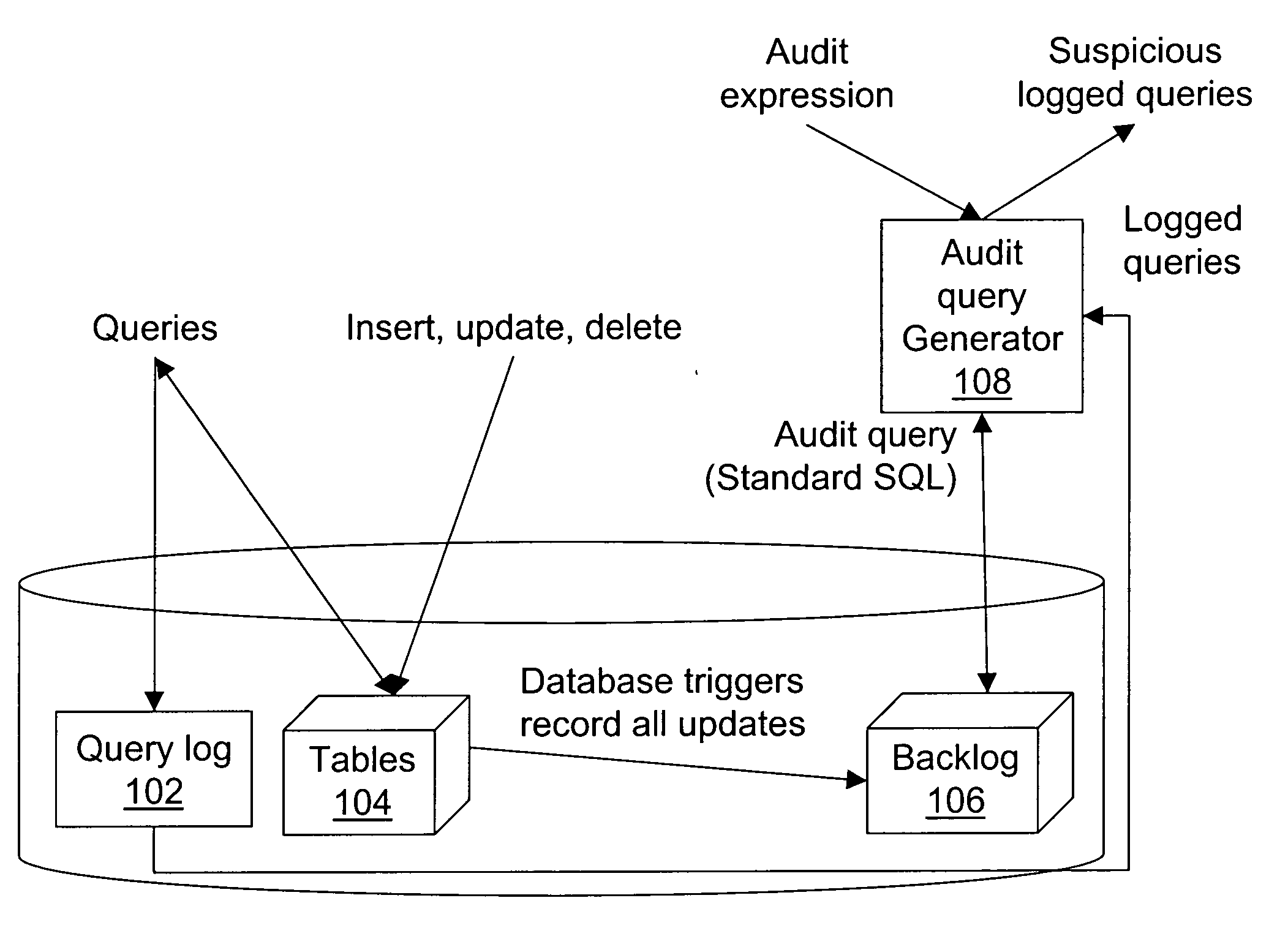Auditing compliance with a hippocratic database
a hippocratic database and compliance audit technology, applied in the field of auditing compliance, can solve problems such as burdening normal query processing with excessive overhead, using audit trail to ascertain compliance is unsatisfactory, and straightforward approach
- Summary
- Abstract
- Description
- Claims
- Application Information
AI Technical Summary
Benefits of technology
Problems solved by technology
Method used
Image
Examples
example 1
Disclosure of disease information of anyone living in the ZIP code 95120 needs to be audited. Here is the audit Expression:
audit disease
from Customer c, Treatment t
where c.cid=t.pcid and c.zip=‘95120’
[0050] This audit expression marks the cells corresponding to the disease column of those tuples in the Customer*Treatment table that have c.cid=t.pcid and c.zip=95120. Any query that accesses the disease column of any of these tuples will be considered suspicious.
Informal Definitions
[0051] Indispensable Tuple—ind(t,Q)
[0052] A tuple tεU is indispensable in the computation of a query Q, if its omission makes a difference.
[0053] Candidate Query—cand(QA)
[0054] A query Q is a candidate query with respect to an audit expression A, if Q accesses all the columns that A specifies in its audit list.
[0055] Suspicious Query—susp(Q,A)
[0056] A candidate query Q is suspicious with respect to an audit expression A, if Q and A share an indispensable tuple.
example 2
Consider the audit expression A in Example 1 and the following query Q
select address
from Customer c, Treatment t
where c.cid=t.pcid and t.disease=‘diabetes’
[0057] Q is a candidate query with respect to A as it accesses the disease column that A is auditing. Consider the Customer*Treatment table. Clearly, tuples that match the join condition and have diabetes in the disease column are indispensable for Q. Similarly, tuples that match the join condition and have 95120 as the zip code are indispensable for A. Therefore Q will be deemed suspicious with respect to A if there was some customer who lived in the ZIP code 95120 and was also treated for diabetes.
example 3
Consider the query Q from Example 2 and the following audit expression A:
audit address
from Customer c, Treatment t
where c.cid=t.pcid and t.disease=‘cancer’
[0058] Q will not be deemed suspicious with respect to A because no tuple in Customer*Treatment can simultaneously satisfy the predicates of Q and A. But how about Alice who has both cancer and diabetes? Although Q discloses Alice's address, the fact that Alice has cancer is not relevant to the query. Q only asks for people who have diabetes. In other words, anyone looking at the output of the query will not learn that Alice has cancer. Hence it is reasonable to not consider the query to be suspicious. Note that all the tuples of Customer*Treatment marked by A have cancer in the disease column and Q does not access any one of them.
Formal Definitions
[0059] Let the query Q and audit expression A be of the form:
Q= . . . (σPQ(T*R)) (1)
A={overscore (π)}COA(σPA(T*S)) (2)
where T, R, S are virtual tables of the database D,...
PUM
 Login to View More
Login to View More Abstract
Description
Claims
Application Information
 Login to View More
Login to View More - R&D
- Intellectual Property
- Life Sciences
- Materials
- Tech Scout
- Unparalleled Data Quality
- Higher Quality Content
- 60% Fewer Hallucinations
Browse by: Latest US Patents, China's latest patents, Technical Efficacy Thesaurus, Application Domain, Technology Topic, Popular Technical Reports.
© 2025 PatSnap. All rights reserved.Legal|Privacy policy|Modern Slavery Act Transparency Statement|Sitemap|About US| Contact US: help@patsnap.com



